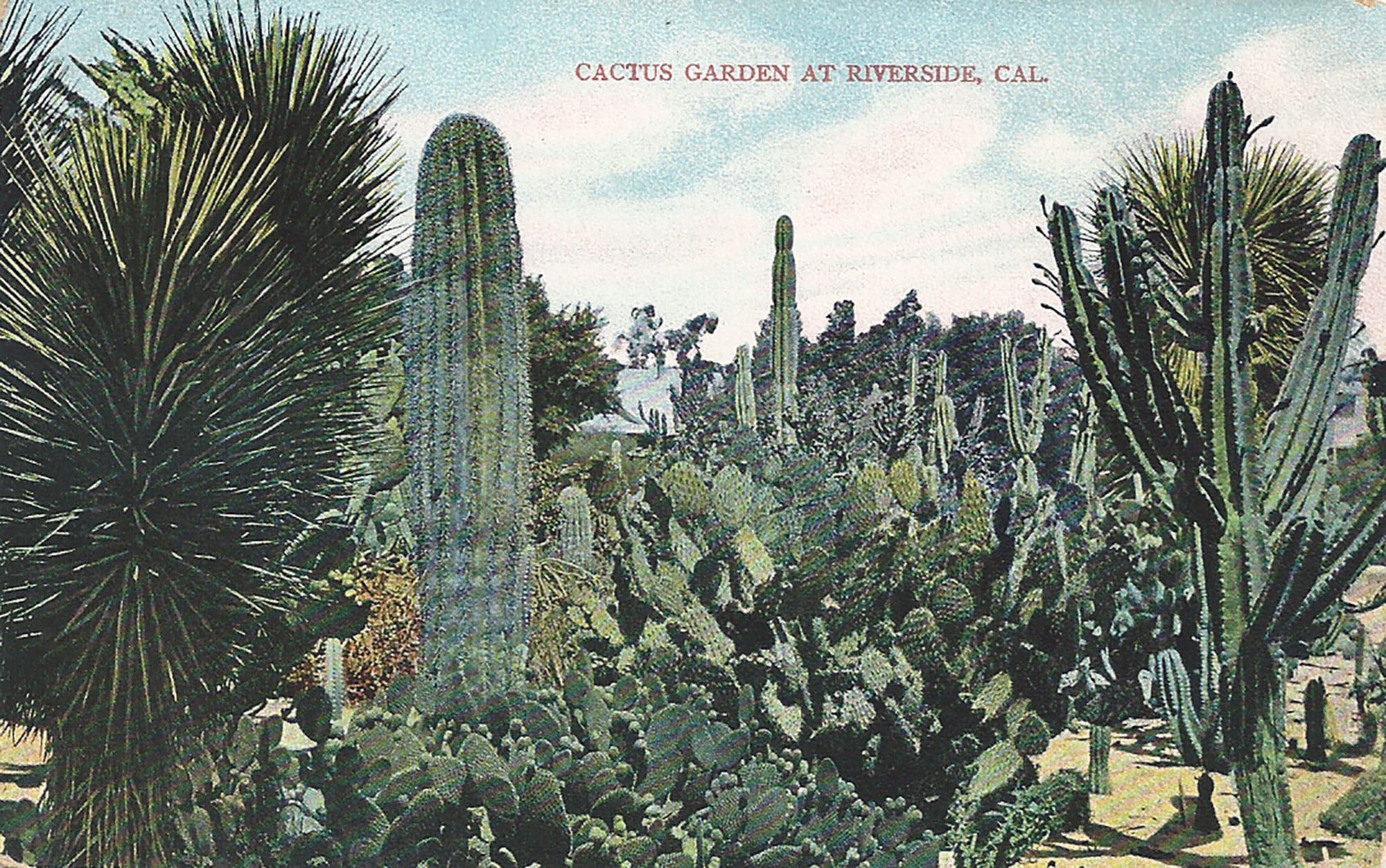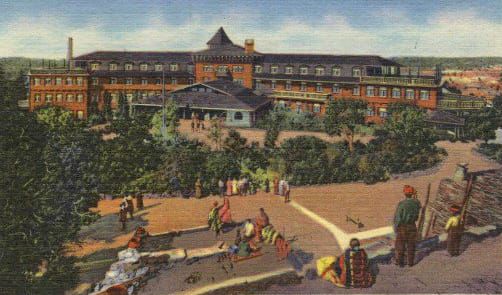16,000 Cardboard Spoons Highlight Child Hunger Crisis
La Sierra University art installation turns macaroni boxes into powerful statement on food insecurity.
Riverside's scenic parks and gardens owe much of their beauty to Franz Philip Hosp, a visionary landscape architect whose passion for floriculture sculpted the city's natural aesthetics.

Franz Philip Hosp was born on March 30, 1853, in Uberlinger, Baden-Wurtember, Germany. At fifteen, Hosp was an apprentice to a landscape gardener in the gardens of a German Grand Duke. In 1872, at age nineteen, he arrived in New York. He first served as an assistant to his cousin, William Fisher, who did landscaping work in Central Park. Hosp established his florist business in New York a few years later.
Moving farther westward, the Hosp family arrived in Riverside in 1886, where he again set up a florist business. Hosp then expanded his business in various landscaping projects that netted him fame throughout the region.
Within a few years after arriving in Riverside, Hosp’s reputation had risen to the extent that he was asked to submit plans for the ornamentation of Riverside’s City Park. His 1888 plan called for putting in lawns, flower beds, and shade trees at an estimated cost of $2500. The Daily Press later wrote:
“F. P. Hosp, the great landscape gardener, in one year transformed the unsightly five-acre lot in Riverside into one of the most beautiful parks of its size in the State…”
Hosp brought some cactus specimens from the Devil’s Garden area near Desert Hot Springs. In May of 1893, Hosp returned from a trip out to Twentynine Palms with a carload of splendid specimens of cacti for City Park. City Park was officially renamed White Park in 1899 in honor of Albert S. White, an early park commissioner and developer of the park. Albert White and Franz Hosp were mainly responsible for making this park one of the finest collections of cacti in the United States, according to the Smithsonian Institute in 1908.

The first flower show in Riverside, the Chrysanthemum Show, was held in November 1889. Hosp, who exhibited over one hundred varieties of the choicest plants ever seen in the state, made the main display. Not surprisingly, Hosp won First Prize for the largest and finest display.
In Riverside, Hosp continued to build up a reputation as a gardener, florist, landscape artist, and supplier of various plants. In 1893, he brought in seeds from Siam, which he felt would be a good substitute for the cranberry. The Jamaica Sorrel was from the hibiscus family, and it grew to a height of three feet and produced seed pods. Hosp reported that excellent jams and jellies could be made from it.
In addition to White Park, Hosp was also interested in Riverside’s Fairmont Park. In February of 1900, he gave the following variety of trees to Fairmont: Sycamore, box elder, tulip tree, flowering pomegranate, flowering quince, eucalypti, and pepper.
One of the other projects that Hosp took on in the 1890s was a major one in Redlands, landscaping the homes of the Smiley Brothers.
While still working in Redlands, Hosp returned to Riverside in the spring of 1892 to supervise the planting on the newly graded Victoria Avenue, an idea conceived by Matthew Gage. Harold Snyder wrote: “Hosp’s plan is a masterpiece of drive-by landscape planting, as appropriate to the horse-and-buggy era as it is to the automobile age. Over the years, some of the plant material has changed, but the original concept has not altered.” The trees came from around the world, including pepper trees from Peru, eucalyptus trees from Australia, and palms and silk oaks. Victoria was developed by the Gage Canal to promote land sales in the area.

In addition to trees along Victoria Avenue, Hosp also planted shrubs and flowers. Among those were twelve Cecile Brunner rose bushes. They became the inspiration for his first propagated rose. Hosp introduced this new climbing Cecile Brunner, who rose to the public in 1894. This rose was unusually free from disease and insect pests, and it had blossoms that were used for cut roses and boutonnieres
In 1898, Hosp introduced another propagated rose, the Climbing Papa Gontier. Developed in a fashion similar to the Cecile Brunner, this climbing rose grew eight to ten feet with numerous flowers. The Climbing Papa Gontier was described as one of the freest blooming roses known, perfectly adapted to California conditions, and one of the state’s most popular varieties. The flower is rosy crimson with a carmine center.

When Mrs. Cornelia Hill purchased three and a half acres on top of a hill for a new home in Redlands, she engaged Hosp to design and plant the surrounding grounds. The front terrace was planted with citrus and stone fruit trees, and the back was a formal garden. A local reporter wrote: “Mrs. Hill will have one of the prettiest homes in that picturesque section – the grounds laid out by F. P. Hosp, of Riverside, being set to the choicest varieties of shrubbery and tree.” This house was purchased in 1905 by John and Helen Kimberly, and today, it is known as Kimberly Crest.

By 1900, Hosp was well known in many areas of Southern California. He was selected to be one of the judges for the Pasadena Rose Tournament on January 1, 1901. The Tournament of Roses started on January 1, 1890, as a parade of flower-decorated horse-and-buggies and an afternoon of public games. In 1901, when Hosp was a judge, the parade first allowed motorized vehicles, which had to bring up the rear to not scare the horses.
In Riverside, Franz Hosp was active in the Riverside Horticultural Club and the Concordia Society, a club of German families. He also was busy landscaping the newly purchased property of Cornelius Rumsey in the Arlington Heights district.
Sometime in the 1890s, Hosp also worked for the Santa Fe Railroad. He served as superintendent of parks for seventeen years, laying out the beautified station grounds along the line of the Santa Fe from San Francisco south to San Diego and east as far as Albuquerque, N.M. Hosp was in charge of the garden work for the park just north of the Santa Fe depot in Perris. Hosp’s grandest project for Santa Fe was designing and planting the gardens around the El Tovar Hotel in the Grand Canyon. Hosp had a role in planting low-growing plants in the sand along the Santa Fe tracks to prevent blowing sand from drifting over the tracks. This was needed in the sandy wastelands of much of Arizona and New Mexico.

Over the years, Hosp found time to do other projects in Riverside. When the county fairgrounds needed improvements in 1916, Hosp designed a complete plan for driveways, future building sites, picnic grounds, and the attendant tree planting. In 1917, Hosp was hired to prepare plans for the planting and beautifying of the Polytechnic High School grounds. He proposed planting the arroyo bank across the front of the buildings with native flowering shrubs, the wild lilac buckthorn, wild phlox, and others, which would make a beautiful mass effect as viewed from across the arroyo. In 1918, he was hired to do landscape work on the new Fremont School on the city's north side. In addition to schools, Hosp continued to landscape homes. In 1917, he was commissioned to lay out elaborate and beautiful gardens for the remodeled home of Mr. and Mrs. W. L. Boyd on La Cadena Drive. (Boyd was the actor who portrayed Hopalong Cassidy.)
At the California State Fair in Sacramento in August of 1929, Riverside County had a display featuring a figure of a woman presenting the navel orange, the American date, and the climbing Cecil Brunner rose to the attendees of the fair. It was quite an honor for Hosp to have his rose associated with the date and navel orange in a representation of Riverside County.

At 83, Franz Philip Hosp, pioneer Riverside florist and noted landscape gardener, died on Monday, March 9, 1936, in his home after an illness of several weeks. He was buried in Olivewood Cemetery (Plot R-25-4).
Riverside honored Franz P. Hosp on Monday, April 8, 1940, with a special plaque in White Park, the park for which he had designed the landscape. The bronze tablet was furnished by the family and was placed west of the fountain. The plaque read:
In memory of Franz Philip Hosp – 1853-1936 – landscape architect, originator, and propagator of the climbing Cecile Brunner and Papa Gontier rose varieties, whose accomplishments brought both fame and beauty, this tablet is affectionately given by his family and is dedicated to his honor by the board of park commissioners of the city of Riverside in grateful appreciation.
Sad to say, this plaque is no longer in White Park. Also lost is the memory of Franz Hosp in the minds of many people in Riverside. That should be corrected because he played an important role in the early history of Riverside and beyond.
Let us email you Riverside's news and events every Sunday, Monday, Wednesday, and Friday morning. For free